8 reasons the iPhone 14 Plus probably won't be called the iPhone 14 Max
Plus is more and more is enough
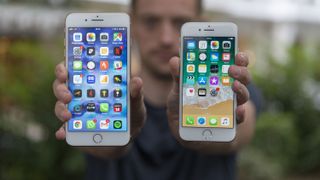
After months of leaks and rumors, we’re expecting four entries in the hotly-anticipated iPhone 14 series, thought to be launching at Apple’s ‘Far Out’ event tomorrow, on September 7, with the most notable addition being the all-new iPhone 14 Max, or is it iPhone 14 Plus?
Unlike the last two generations of iPhone, where the four sets of devices included a ‘mini’ option (the name of which is pretty self-explanatory), the 2022 iPhone lineup is said to be trading in any form of mini for a new larger-screened alternative, thought to be called the iPhone 14 Plus or iPhone 14 Max, but as for which name Apple will dress its new large-screened iPhone with, we think we have the answer.
Plus means more. Max is short for maximum
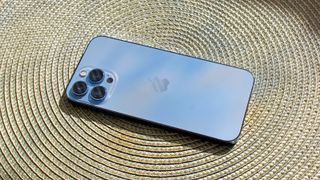
When you buy the iPhone 14 Plus, you’ll be buying the iPhone 14 with a little more screen – that’s pretty much it, based on expectations. You probably won’t get a better camera, or the latest Apple A16 processor. You just get more screen. That’s a nice upgrade for $100, and it would make sense for the battery to be larger, as well. We don’t expect a dramatically different design between the iPhone 14 and the iPhone 14 Plus, either.
Were you to buy the Apple iPhone 14 Pro Max, on the other hand, you’ll likely expect to get the maximum amount of iPhone that Apple makes. Beyond a bigger screen and battery you should also get the best cameras. The Pro Max models traditionally have more camera sensors than the standard iPhones each year, so you even get more physical camera too.
That’s why it’s called the Pro Max, and that’s also why it’s the most expensive phone Apple offers.
More brand names make it easier for buyers to ask for what they want
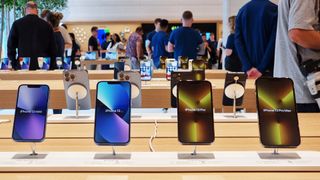
While you may be thinking, ‘I’m a tech-savvy person, look at me right now reading about the next-generation of mobile technology’ but then imagine the folks who don’t pay attention to iPhone model numbers, let alone brand names. When the average tech buyer walks into the cell phone store and asks for an iPhone, they’ll only be confused if they’re served two different models with the “Max” suffix, and that’s before they’re introduced to a smaller iPhone that slots in in between.
Maybe they want the best iPhone, or maybe they just want the biggest iPhone. Now the salesperson has to explain branding terms to a customer – Max vs Pro. Having too many brand names can be confusing, but Apple keeps things simple in general – so adding one new word, “Plus,” should be more approachable to general consumers.
Get the best Black Friday deals direct to your inbox, plus news, reviews, and more.
Sign up to be the first to know about unmissable Black Friday deals on top tech, plus get all your favorite TechRadar content.
It’s not like Apple is adding an arbitrary letter to the phone names, like an ‘ iPhone M 14 Pro,’ or ‘iPhone 14x Max,’ (remember the iPhone 5S and 6S?). Those sorts of model names look more like internal product codes that accidentally got printed on the box. A simple “Plus” is all Apple needs to convey product clarity.
For better and for worse, Samsung also has a Plus tier
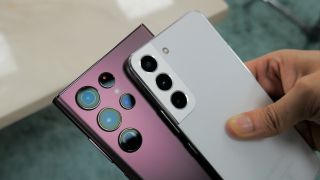
Samsung doesn’t have a Max, it has an Ultra, but if you want to take a single step up from the base Samsung Galaxy S22, you’ll get a Galaxy S22 Plus. Samsung already has a Plus tier, and that is a good thing for Apple, with its big rival laying the groundwork and conditioning consumers to already feel comfortable with the ‘Plus’ suffix and what it stands for
For $800, you can get the Samsung Galaxy S22, or for $1,000 you can get the Galaxy S22 Plus. The Plus has a screen that is 0.5-inches larger; which actually feels significant. It also gets a slightly larger battery, at 4,500mAh, compared to the smaller 3,700mAh inside the base S22. Apple can use the exact same framework and charge a similar difference for the upgrade to 14 Plus and it would seem like a bargain.
In either case, this is great for buyers. When a customer goes to a carrier store to check out the different models, it will be easier for them to compare different iPhone 14 and comparable Samsung Galaxy phones side by side. Considering Samsung dominates our list of the best phones, we think buyers should be making the comparison.
Buying cases is harder with confusing names
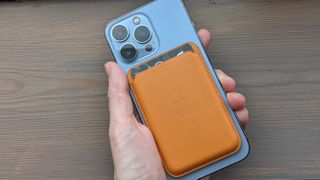
It’s no accident that the first leak of the new product name came printed on a phone case box. It seems unlikely the iPhone 14 Plus and the 14 Pro Max will share the same exact dimensions, and thus fit the same cases. The cameras will likely be very different, so the cutout on the back will fit differently too.
If there were an iPhone 14 Max and an iPhone 14 Pro Max, each requiring its own case, the naming similarity could prove a nightmare for potential buyers unaware of the distinct model differences. Finding the right protective shell – especially if product boxes are poorly marked or similarly styled – would likely require more expertise than a phone owner should need to bring to their purchasing decision. Having a more unique brand name will help clarify the already murky accessory market.
Customer service would need an extra script to explain Max vs Pro Max

Because it’s likely that the iPhone 14 Plus and the iPhone 14 Pro Max will see their most dramatic differences on the inside, it’ll be necessary for customer service representatives to make sure they are offering help for the correct product. Aspects like repair costs, beyond-warranty coverage and more will vary depending on the model.
Today, if you break the back glass on an iPhone 13 and an iPhone 13 Pro Max, the Pro Max costs $150 more to repair, because of all the extra technology that gets replaced. Sure, $350 is a lot to fix a broken iPhone, but $500 is closer to the cost of a whole new phone. If customers are confused about which iPhone they have, or how much repairs cost, they may never get those phones repaired.
Having an iPhone 14 Plus and an iPhone 14 Pro Max will make it easier for owners to understand the repair costs associated with their specific model.
Plus sounds friendlier than Max

As mentioned earlier, ‘Plus’ is more, Max is maximum. ‘Plus’ is already more readily associated with size; people already buy plus-size clothing, or book plus-size airline seats, for a nominal fee. In mathematics, plus is addition. Things get bigger, but not as quickly as they do with multiplication or exponents. Plus is a friendly way to get a little bit bigger, without going too far.
Max feels more like a synonym for Pro or at least implies a device that surpasses what the base iPhone offers in areas other than just size.
That’s why there needs to be an iPhone 14 Plus. The iPhone is a friendly brand, not a hyper-aggressive one. The step-up from the base iPhone 14 should reflect this sentiment. Save Max for the hardcore fans and the top-tier hardware
“Max” should be reserved for the highest end, not 2nd from bottom
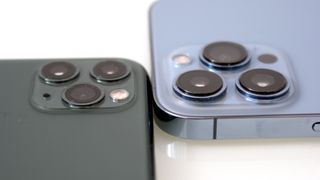
When you sort a list of iPhones by price, highest to lowest, the top phone is the Pro Max, obviously. The phone second from the bottom looks set tobe the iPhone 14 Plus. If Apple instead opted for the ‘iPhone 14 Max’ branding, that would put a Max-branded device towards the bottom of its hot new iPhone lineup. That’s unacceptable, especially to buyers interested in the iPhone 14 Pro Max.
Right now, only one Apple iPhone starts above $1,000. The iPhone 13 Pro comes in just under at $999, but the 13 Pro Max leaps that hurdle and goes right to $1,099. That’s before you upgrade the storage. In other words, Apple is selling its biggest fans one of the most expensive phones you can buy. The Samsung Galaxy S22 Ultra 5G is more expensive at $1,299, but it comes with five cameras and a stylus.
Apple needs to maintain the aspirational nature of the Pro Max branding. If the iPhone 14 Max arrived as one of the more affordable options, it would undermine the status of the other Max in the lineup.. By offering an iPhone 14 Plus instead, the Max brand is reserved only for the highest-end of iPhone for the most committed Apple customers.
When you tell people to pay $100 more, that’s Plus. When you tell them to pay $400, that’s Max
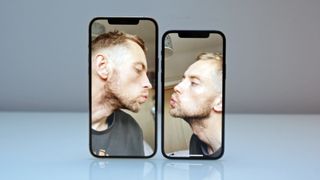
An iPhone buyer walks into a store and asks to buy an iPhone (this isn’t a bad joke, we promise). They may have some idea how much an iPhone costs these days, but they definitely know how much they want to spend. The salesperson will doubtless try to upsell them a better iPhone than the base iPhone 14. Have $100 more to spend? Get a bigger screen. Have $200 more? Get a bigger screen and twice as much space for your photos!
When you ask someone to spend $100 more, you can call that a Plus. When you ask someone to spend $400 more, almost 50% more than the original $700 price, you can no longer call that upsell a Plus, that is now a Max.
Apple is sending a message that if you want to buy into the Max branding, you can’t get there with just $100 more. You need to pony up and pay your way into the highest tier.

Phil Berne is a preeminent voice in consumer electronics reviews, starting more than 20 years ago at eTown.com. Phil has written for Engadget, The Verge, PC Mag, Digital Trends, Slashgear, TechRadar, AndroidCentral, and was Editor-in-Chief of the sadly-defunct infoSync. Phil holds an entirely useful M.A. in Cultural Theory from Carnegie Mellon University. He sang in numerous college a cappella groups.
Phil did a stint at Samsung Mobile, leading reviews for the PR team and writing crisis communications until he left in 2017. He worked at an Apple Store near Boston, MA, at the height of iPod popularity. Phil is certified in Google AI Essentials. He has a High School English teaching license (and years of teaching experience) and is a Red Cross certified Lifeguard. His passion is the democratizing power of mobile technology. Before AI came along he was totally sure the next big thing would be something we wear on our faces.
Most Popular

